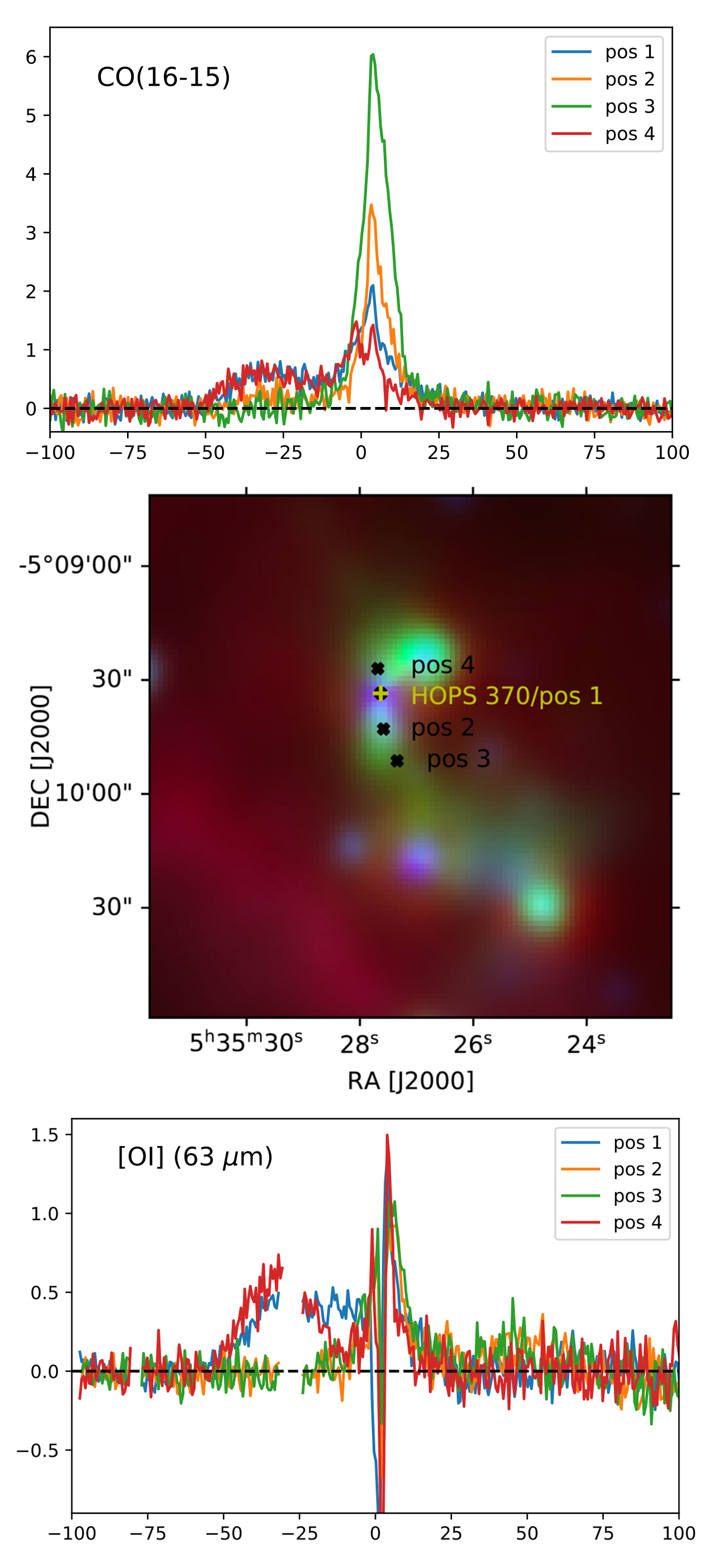The Orion molecular clouds (OMCs) is the most active star forming region in the solar vicinity and thus an ideal target to study individual low- to intermediate mass star forming cores. Observations carried out with the GREAT receiver on the SOFIA telescope detected the [OI] line at 63 μm and the CO(16-15) line towards four protostars in the OMCs.
The wings of the [OI] 63 μm spectra trace the jet that originates from the disk around the protostar. Furthermore, theory predicts that the [OI] luminosity of the jet is a direct tracer of the amount of mass ejected. CO(16-15) on the other hand traces the momentum injected by the jet in the cavities of the protostellar core. Both lines, with complementary archival data (e.g. from Herschel), thus provide a complementary view on protostellar feedback in Orion.
Four positions were observed in project 03_0097 towards the HOPS 370 protostellar core and one towards HOPS 108. These cores are the most luminous targets of the HOPS survey. In project 06_0142 , the area containing HOPS 108 and HOPS 370 is fully mapped which allows to spatially resolve the jets and possible bowshock associated with this region. Project 03_0097 also carried out observations of two less bright targets (HOPS 60 and HOPS 66). The observations thus cover four protostellar cores with different properties (e.g. luminosity) which allows to compare the outflow properties of different targets.
All the data from the GREAT receiver towards the HOPS sources can be found on the SOFIA IRSA Archive .

Fig. 1: (top) CO(16-15) spectra towards the 4 positions observed around HOPS 370. (middle) WISE RGB image (R: WISE 3, G: WISE 2, B: WISE 1) of the region around HOPS 370 that indicates the 4 observed positions with GREAT on SOFIA. (bottom) [OI] spectra at 63 μm towards the same 4 observed positions around HOPS 370.